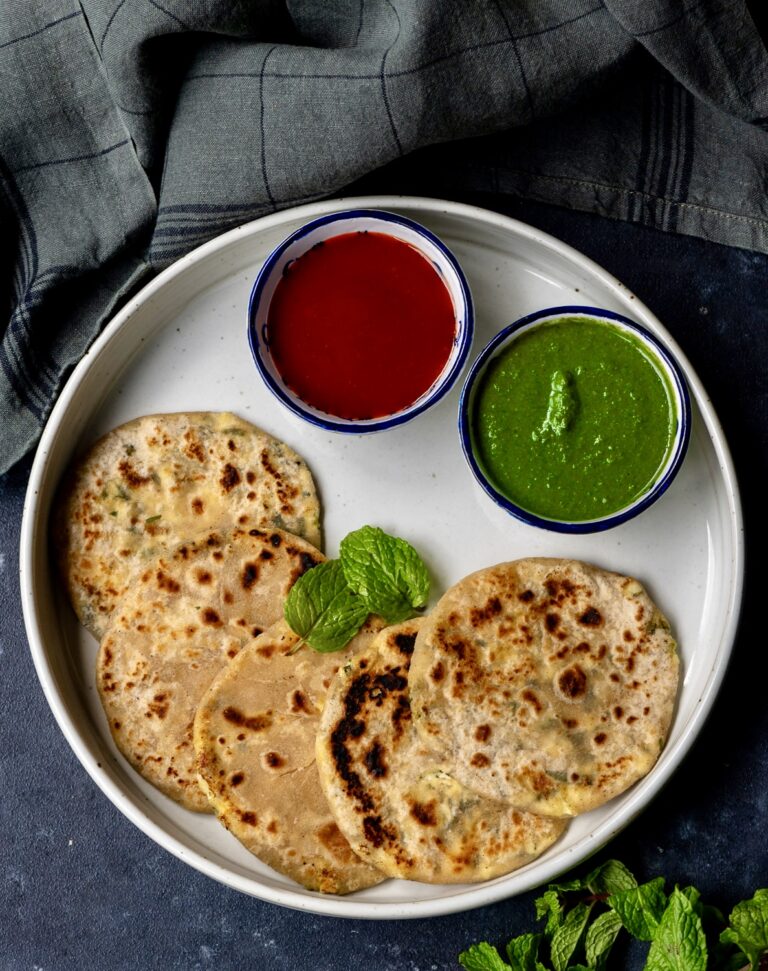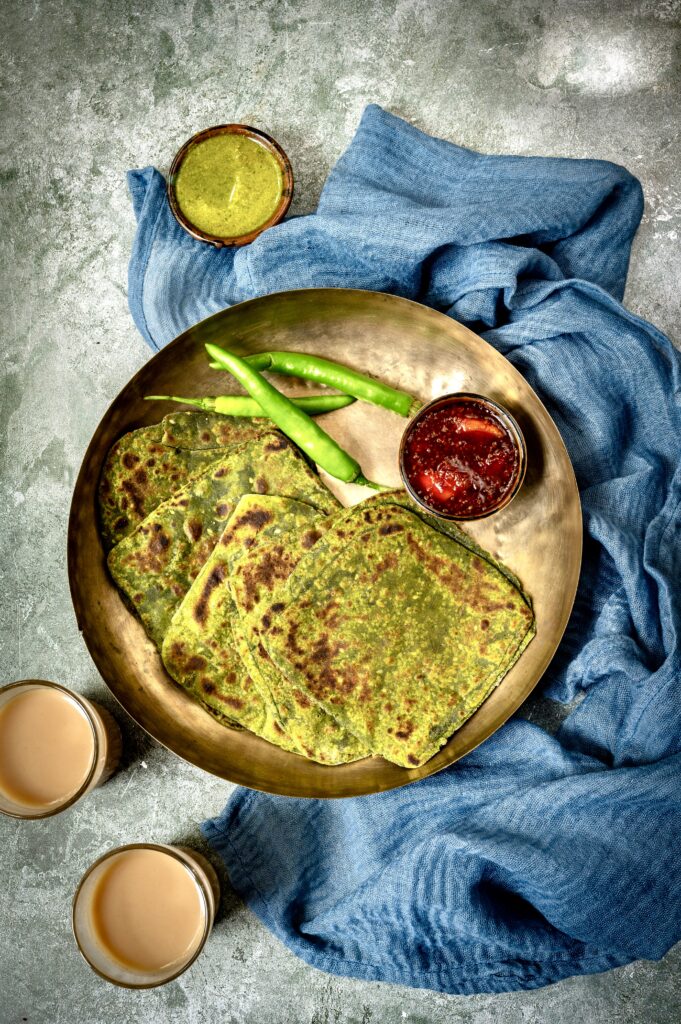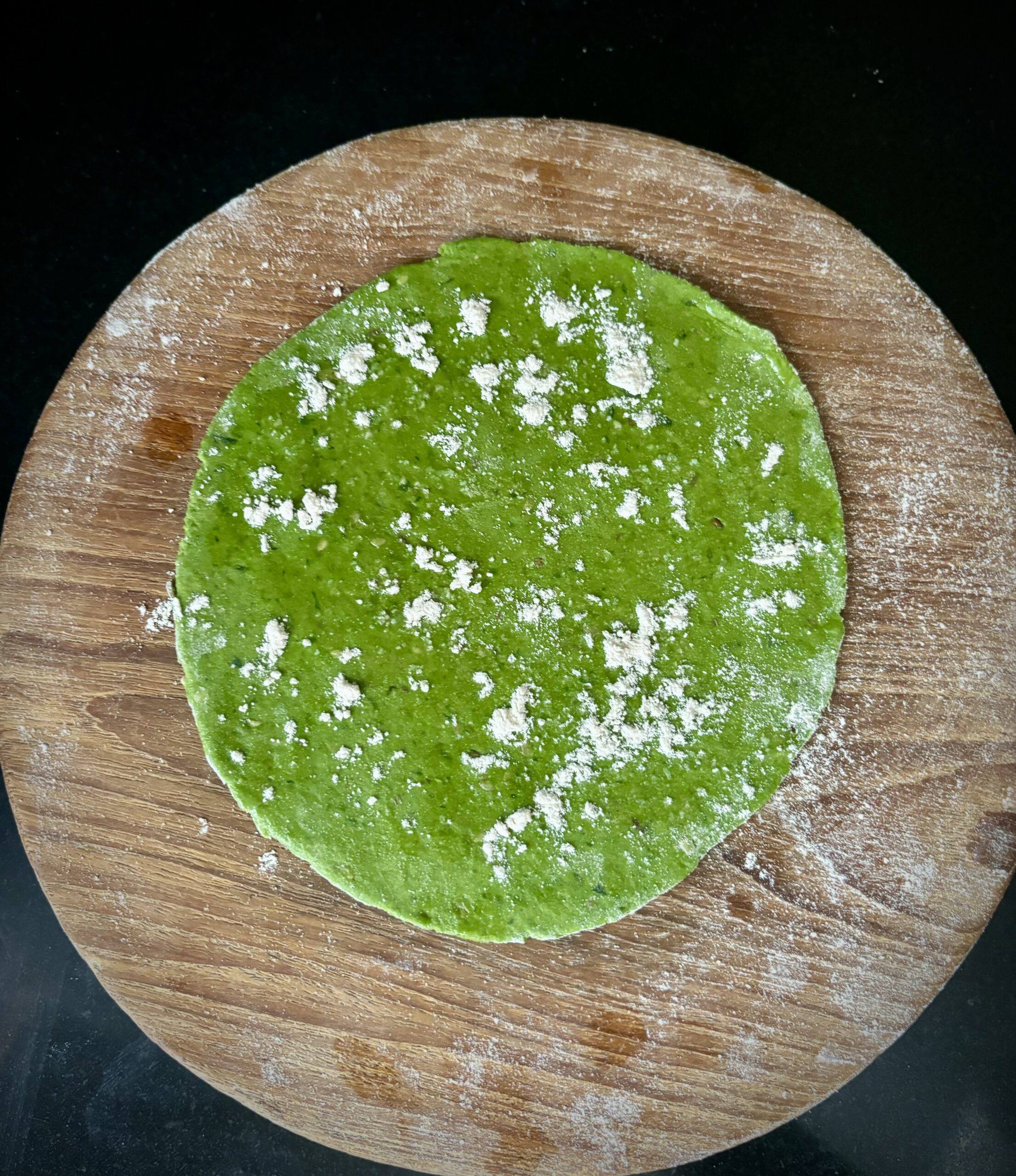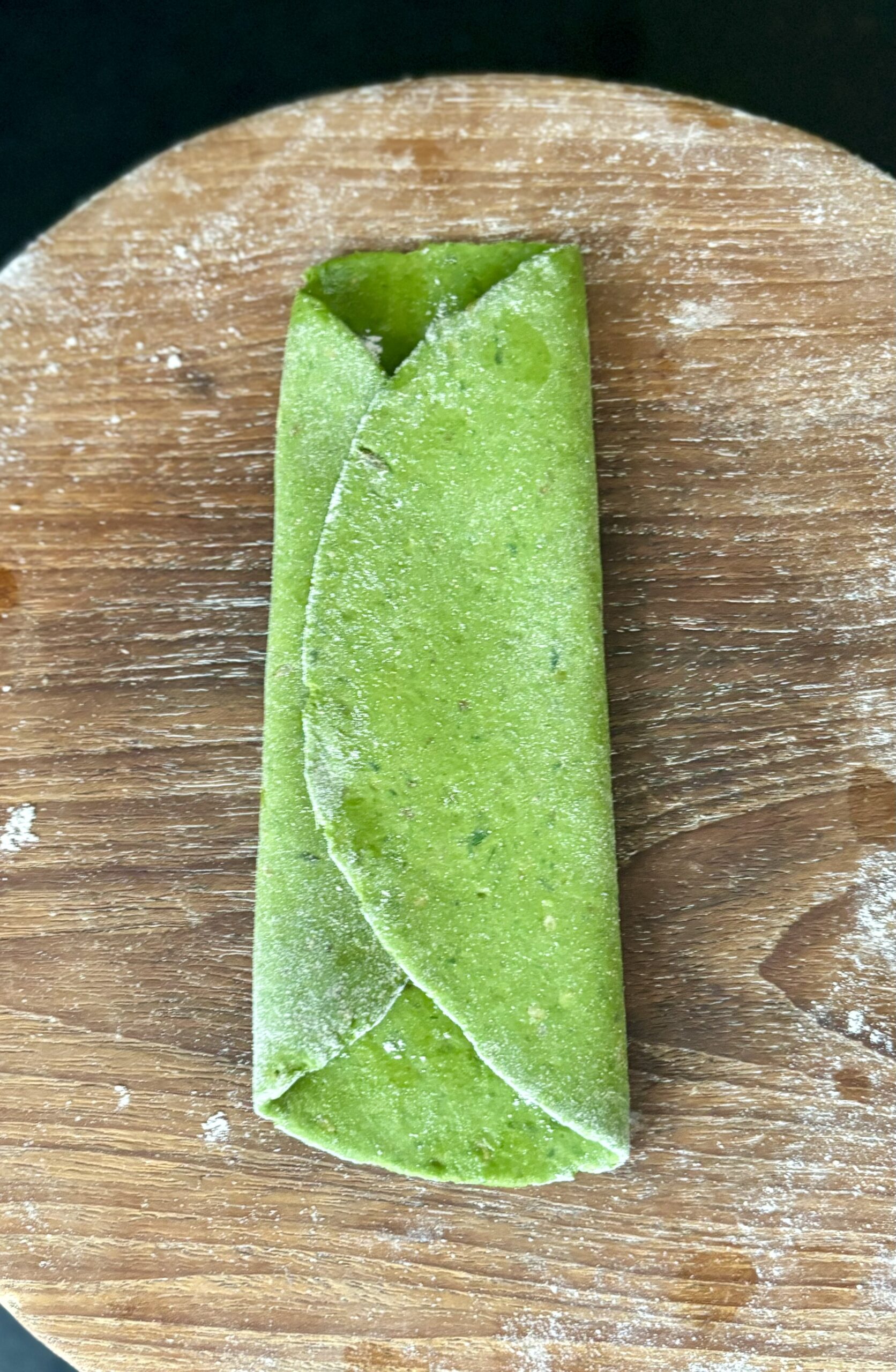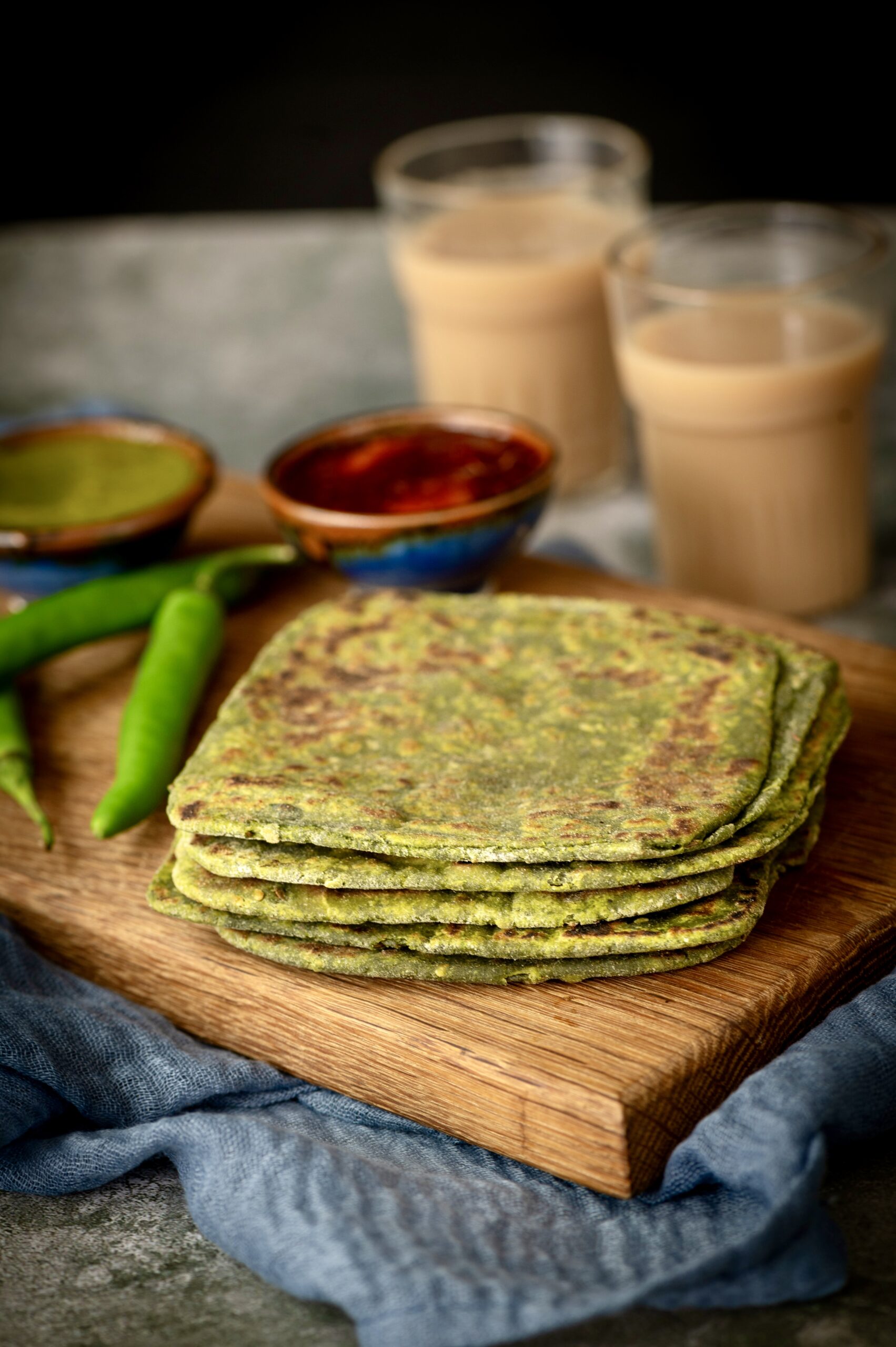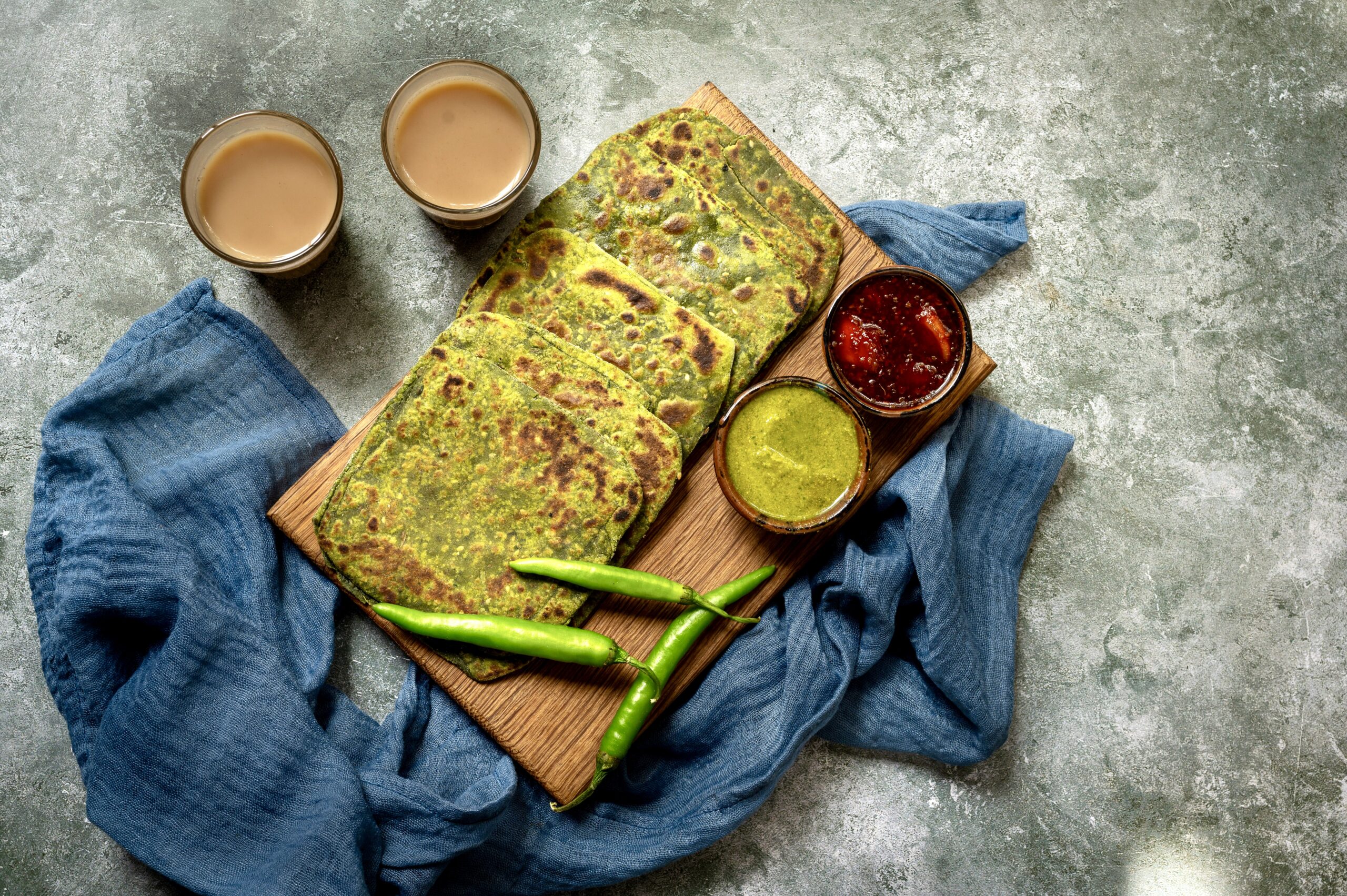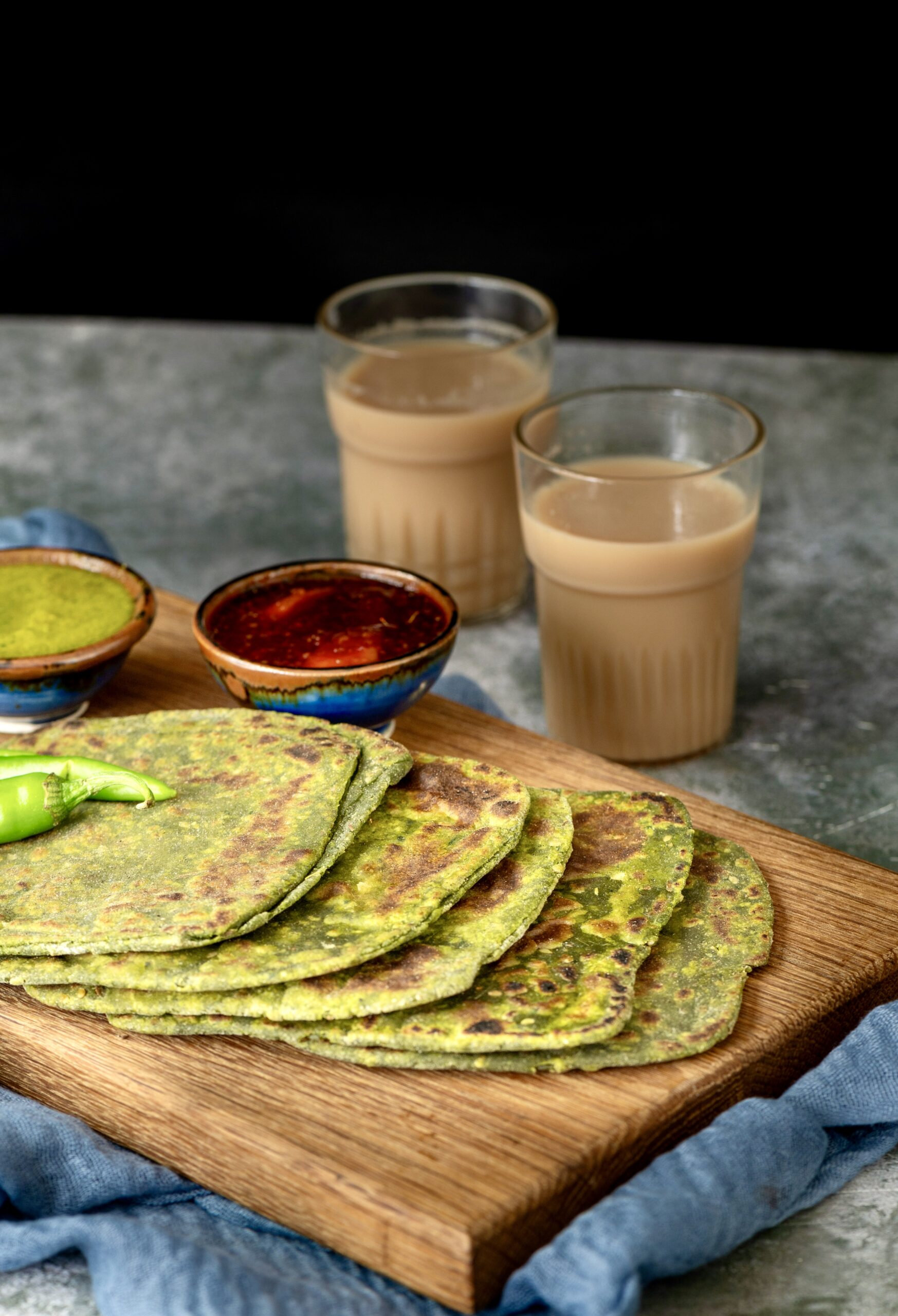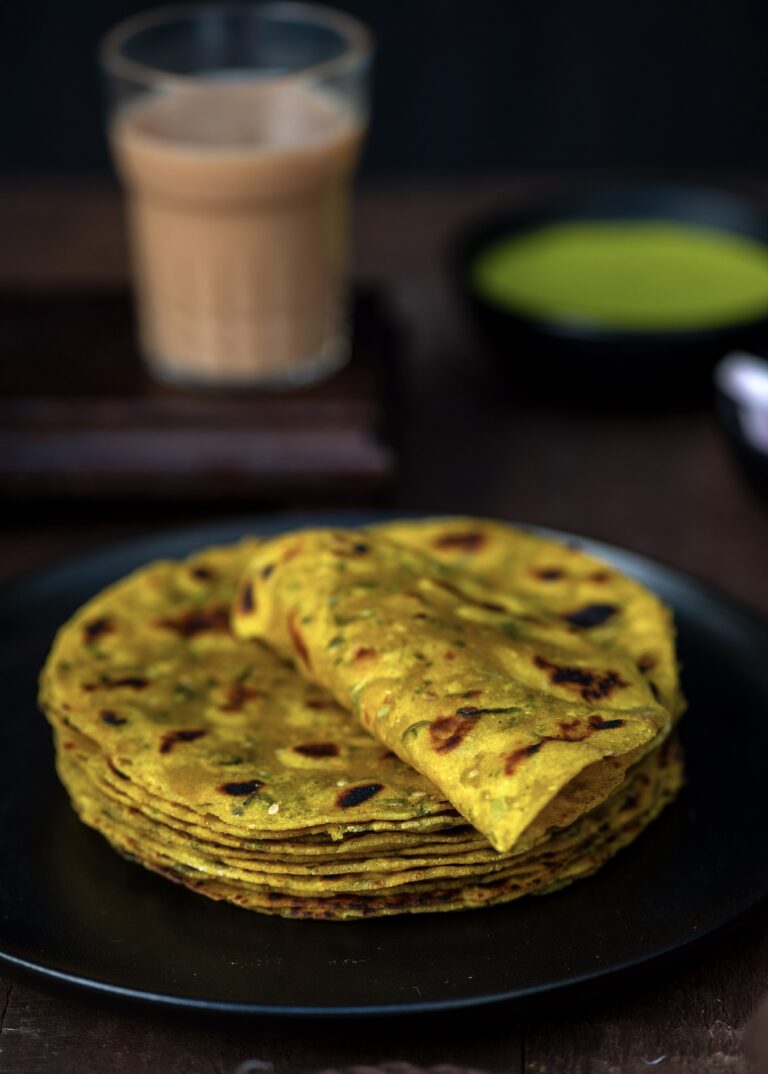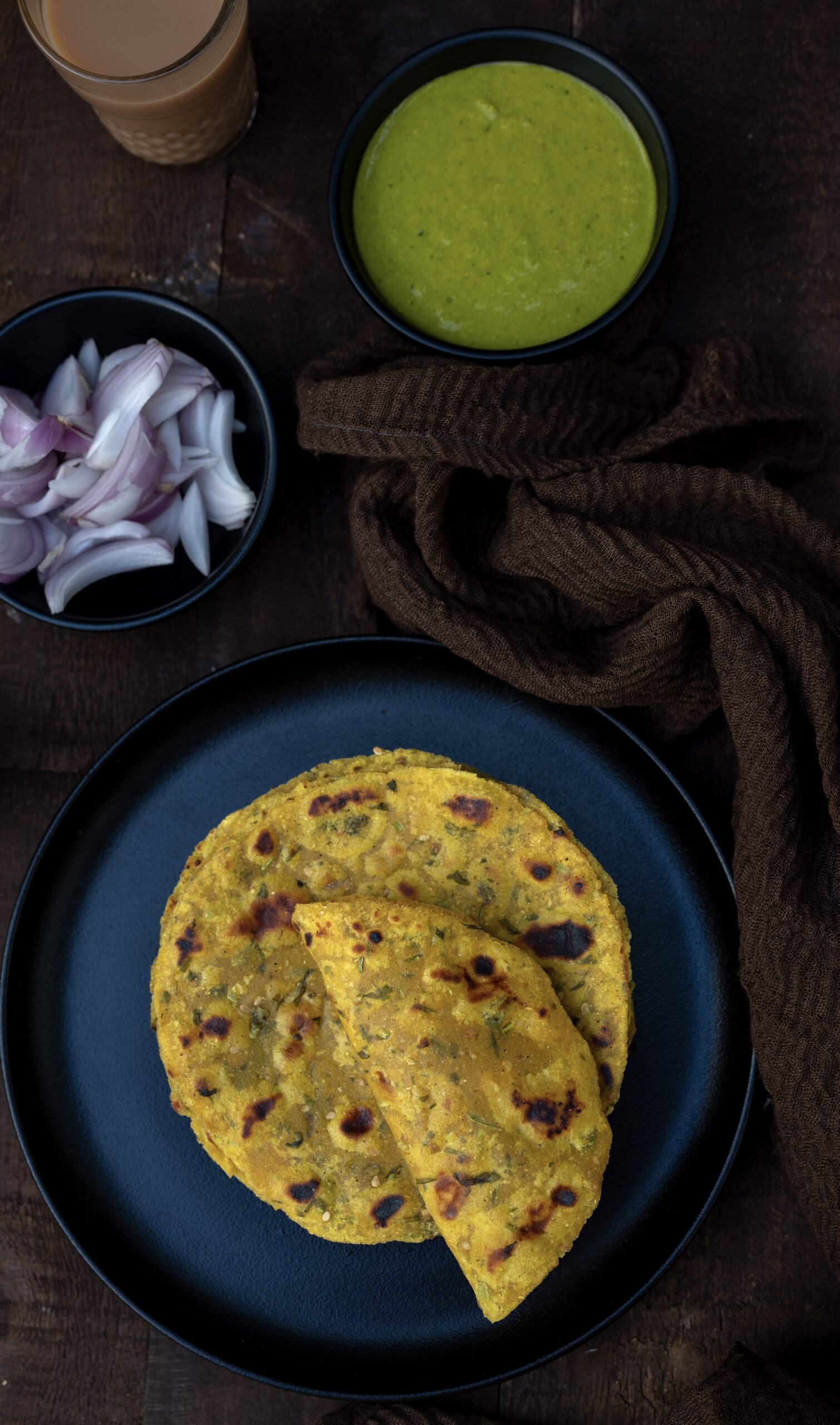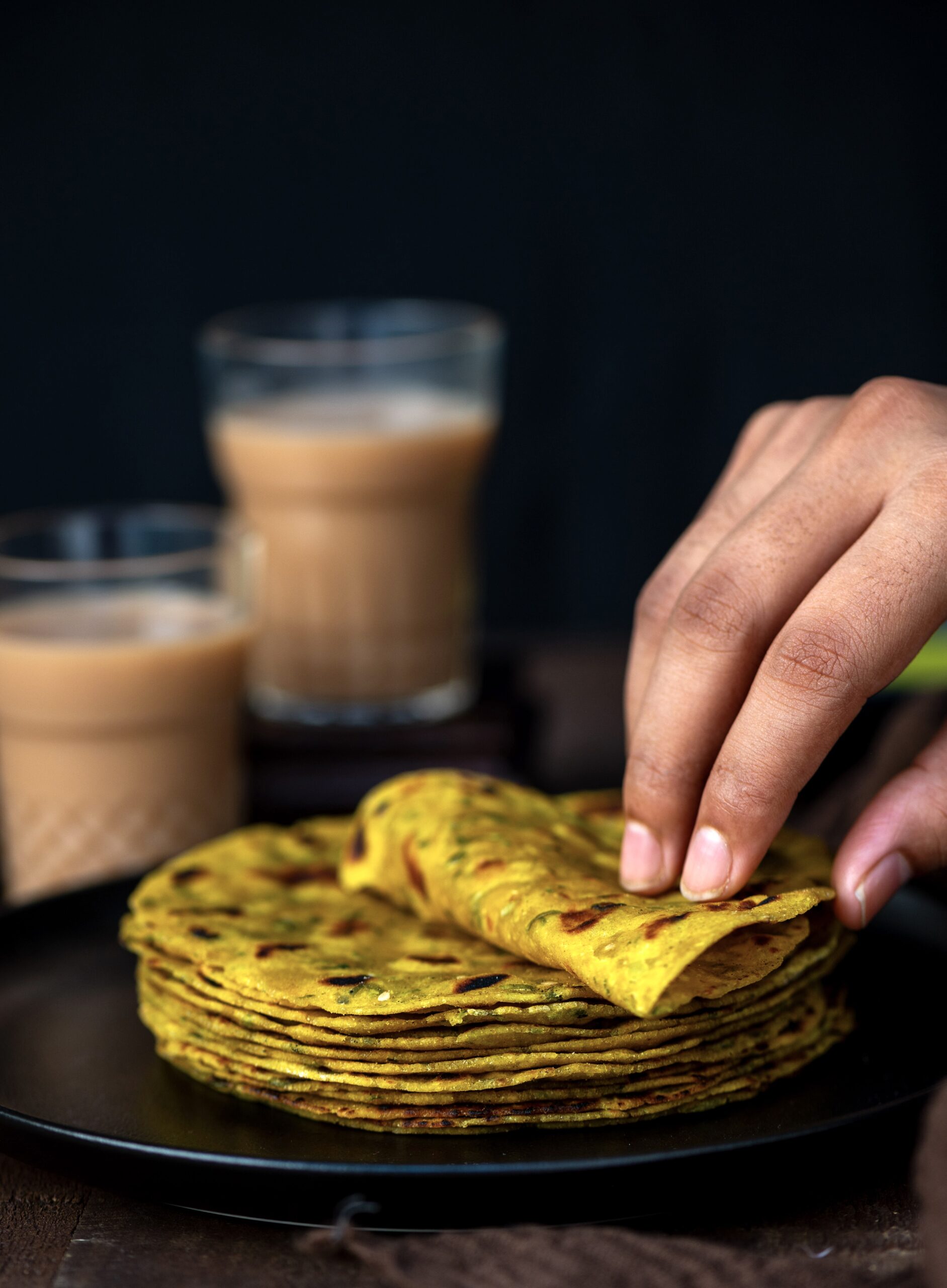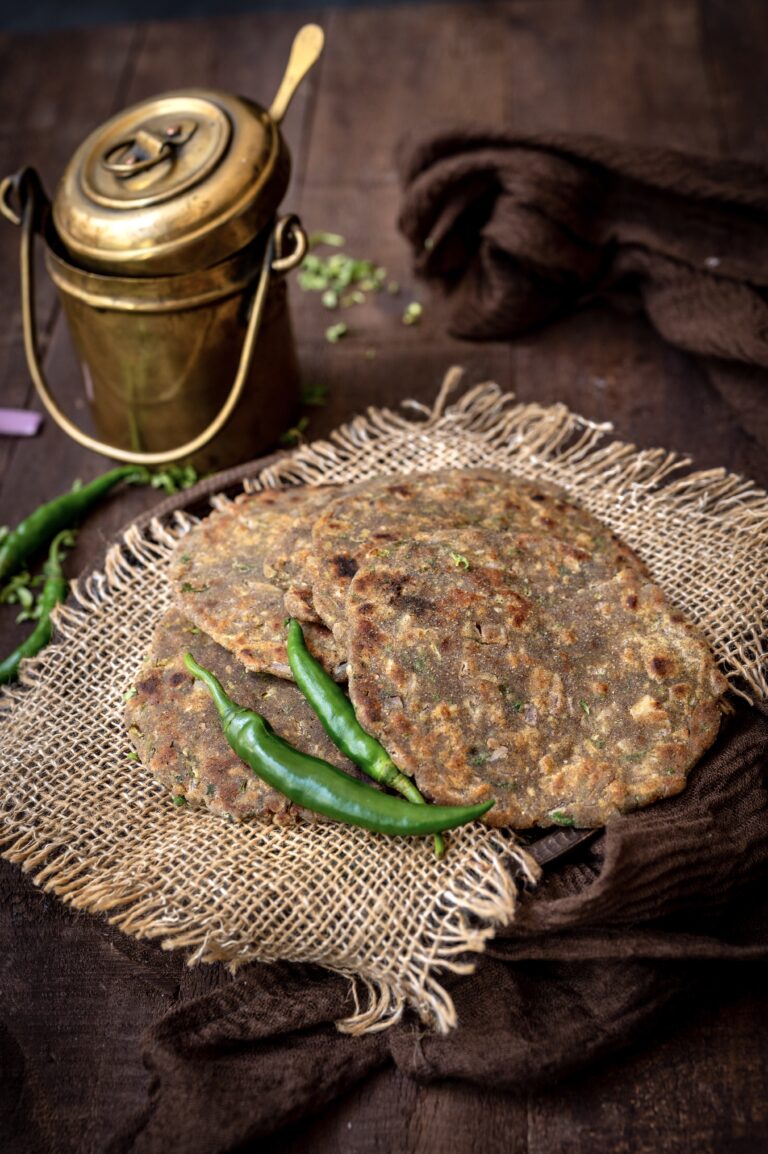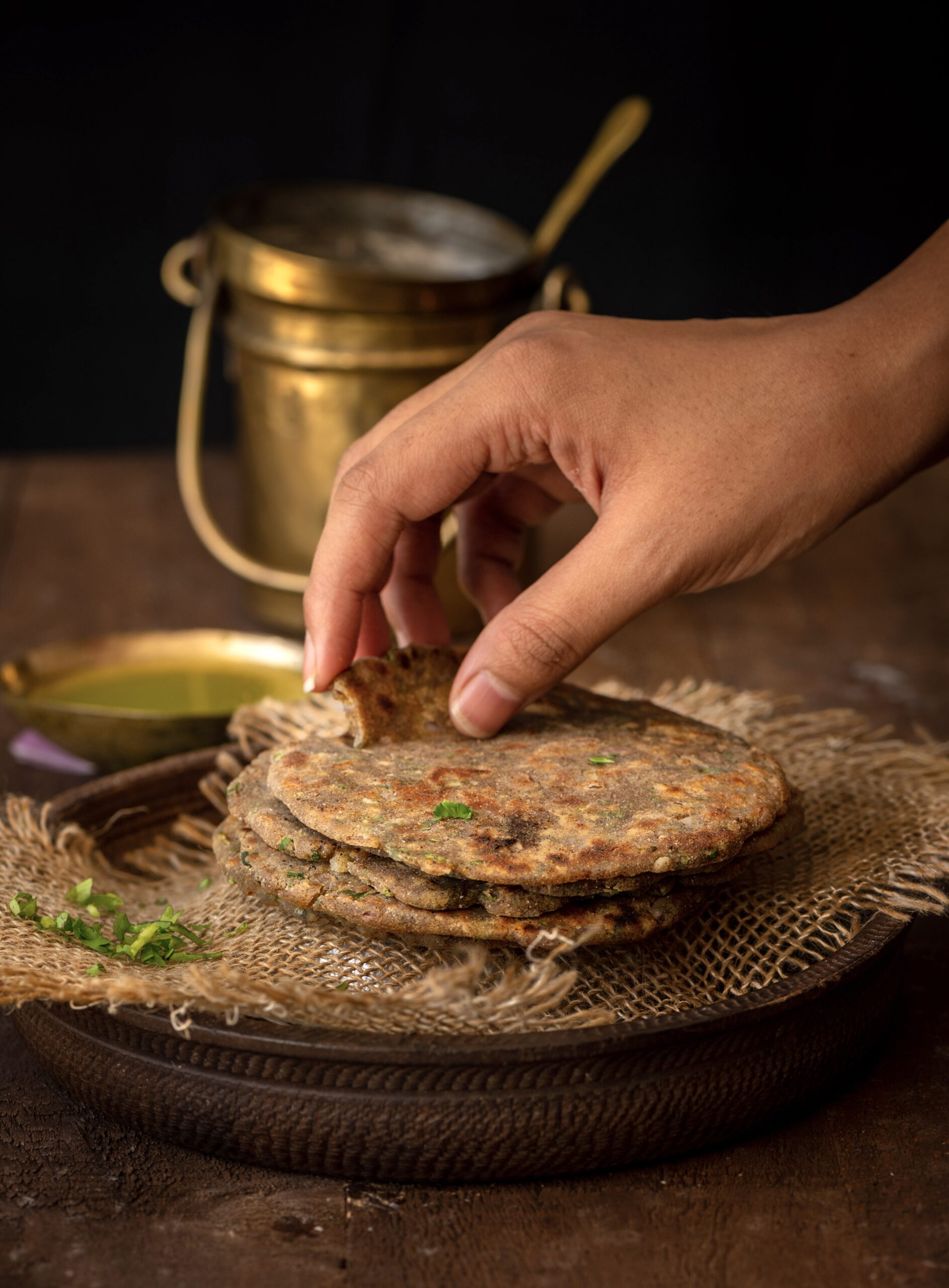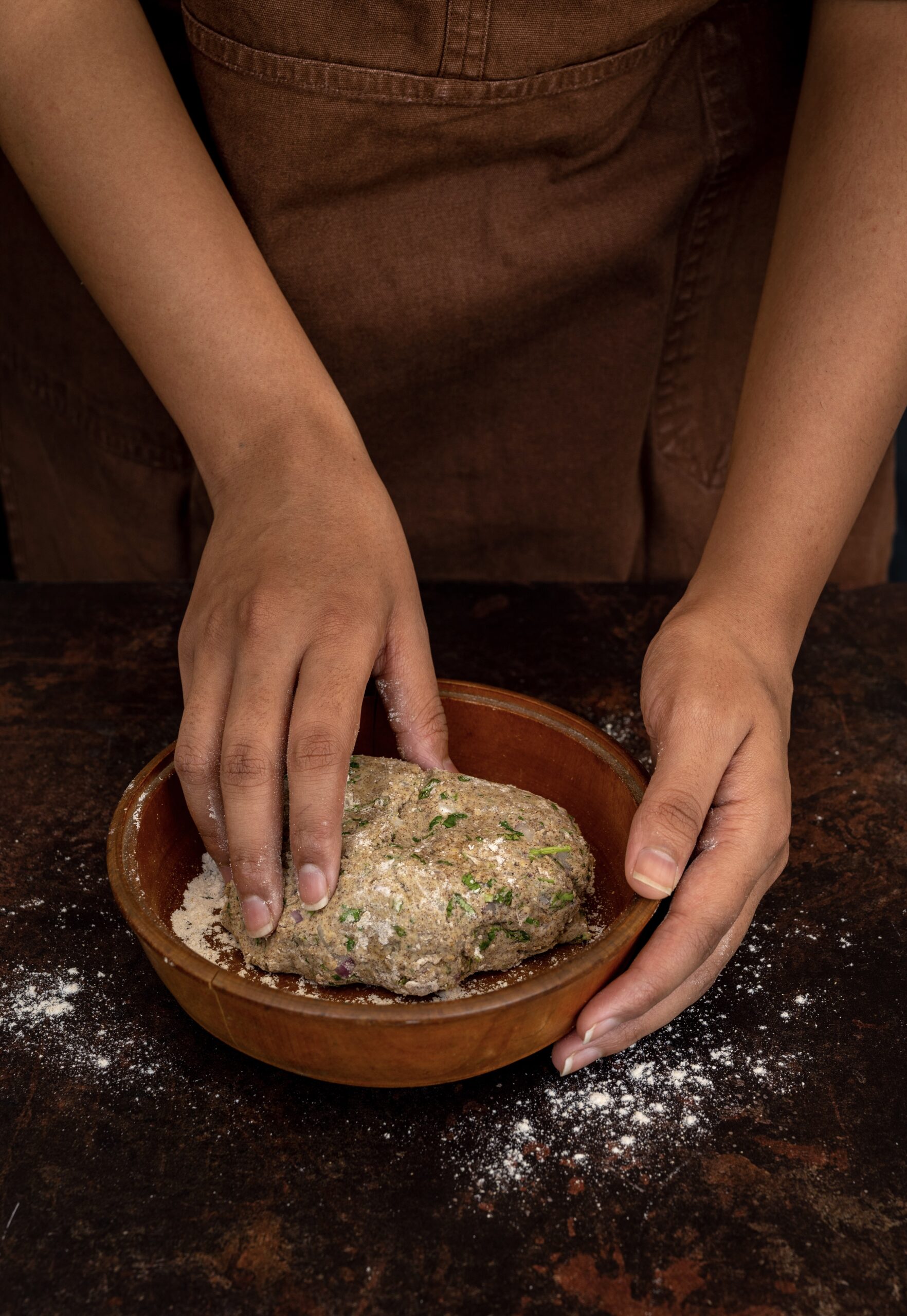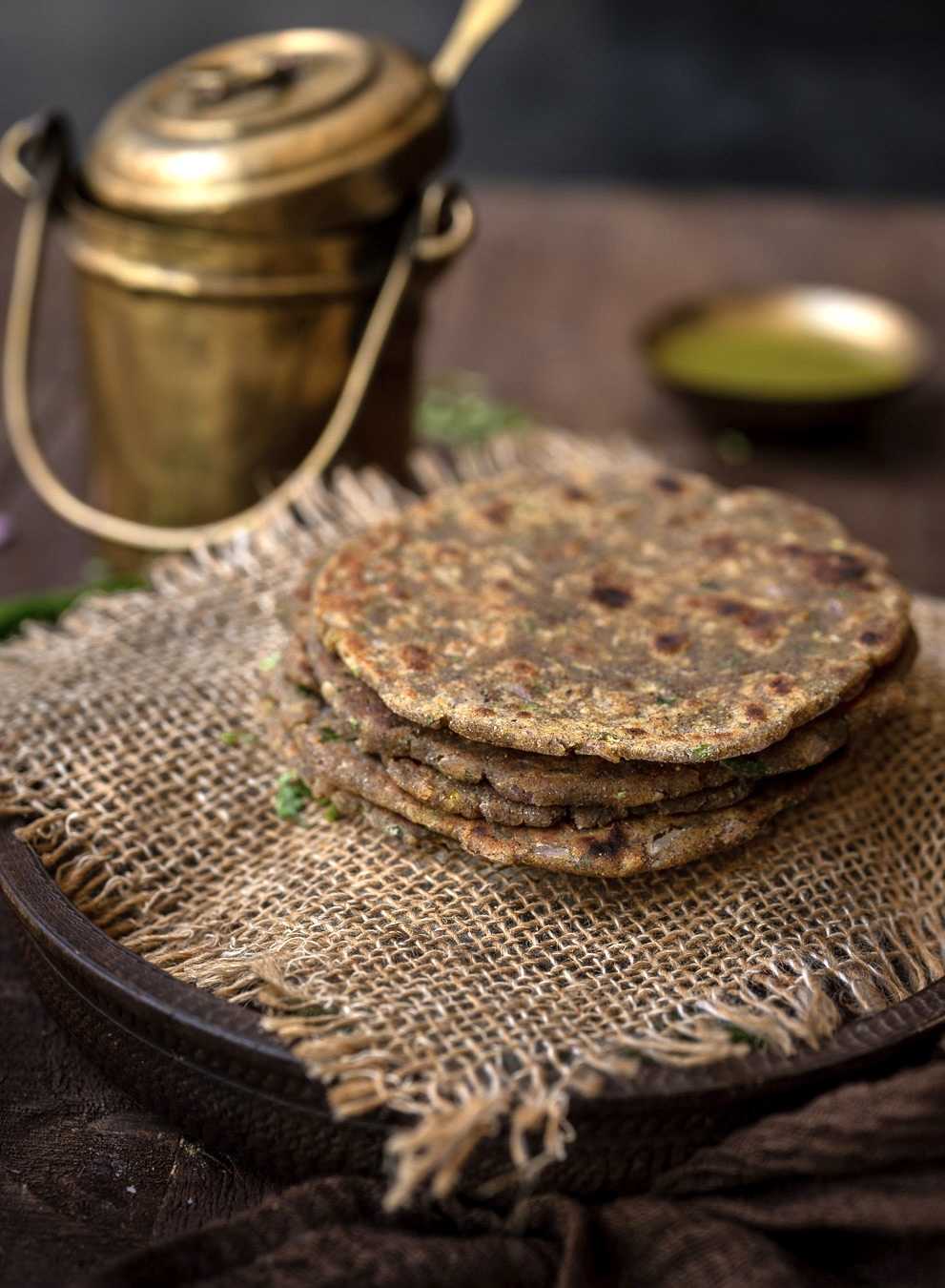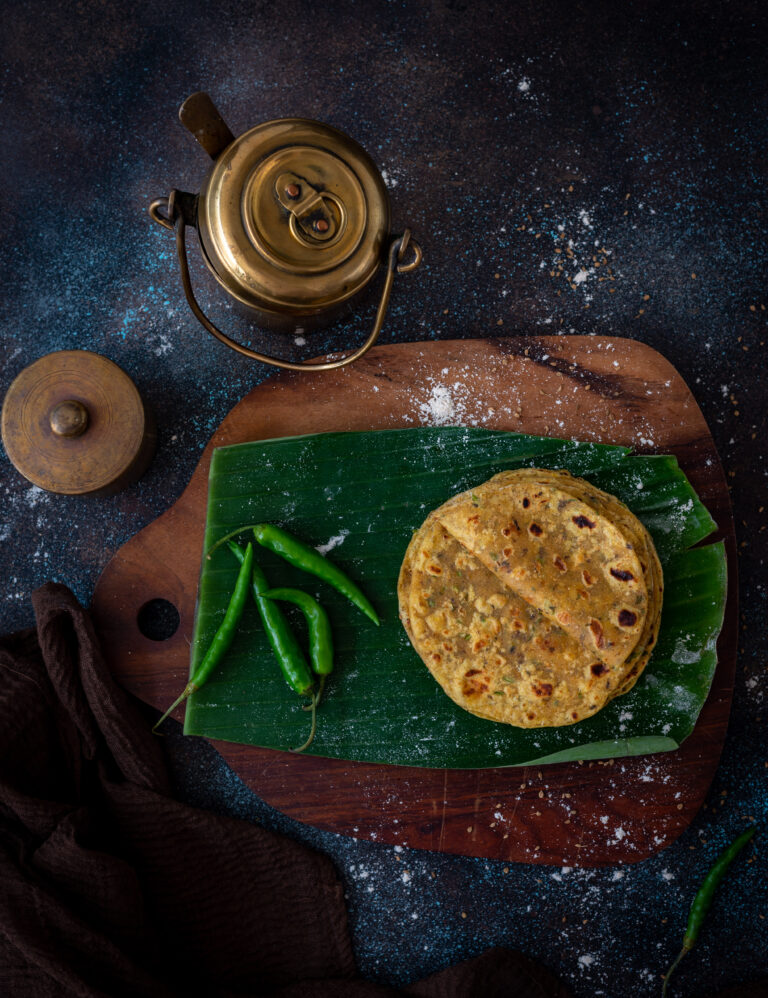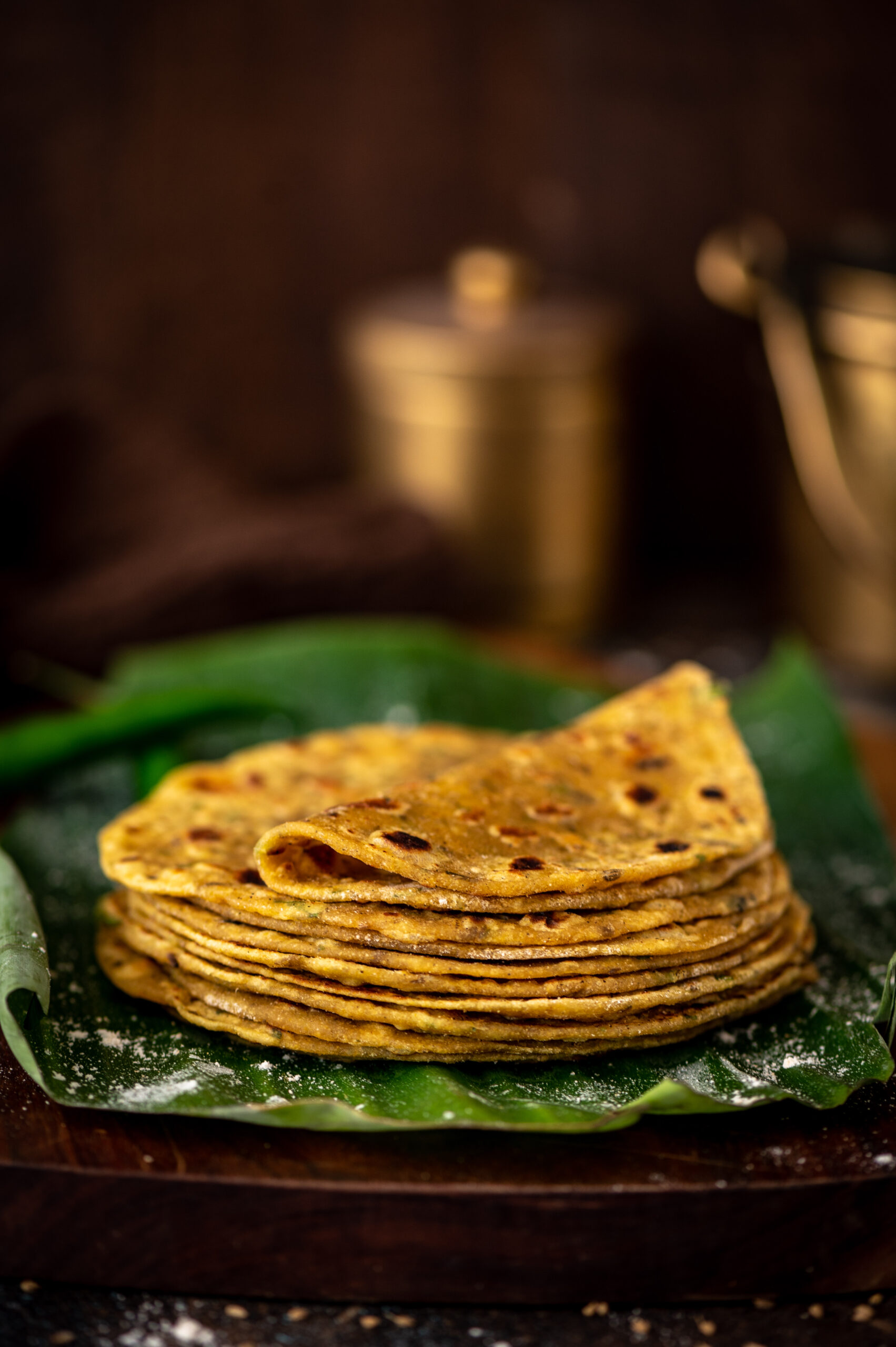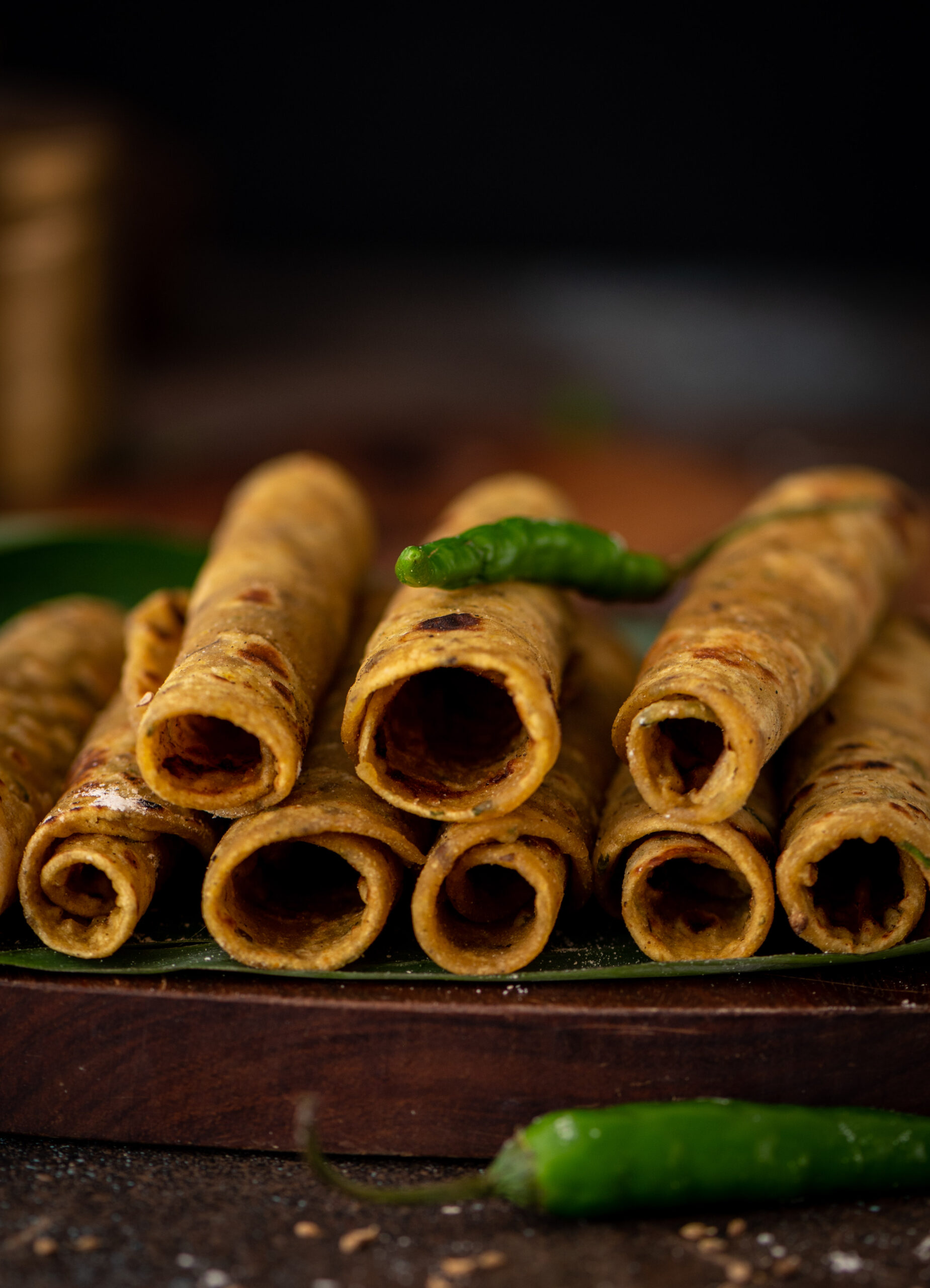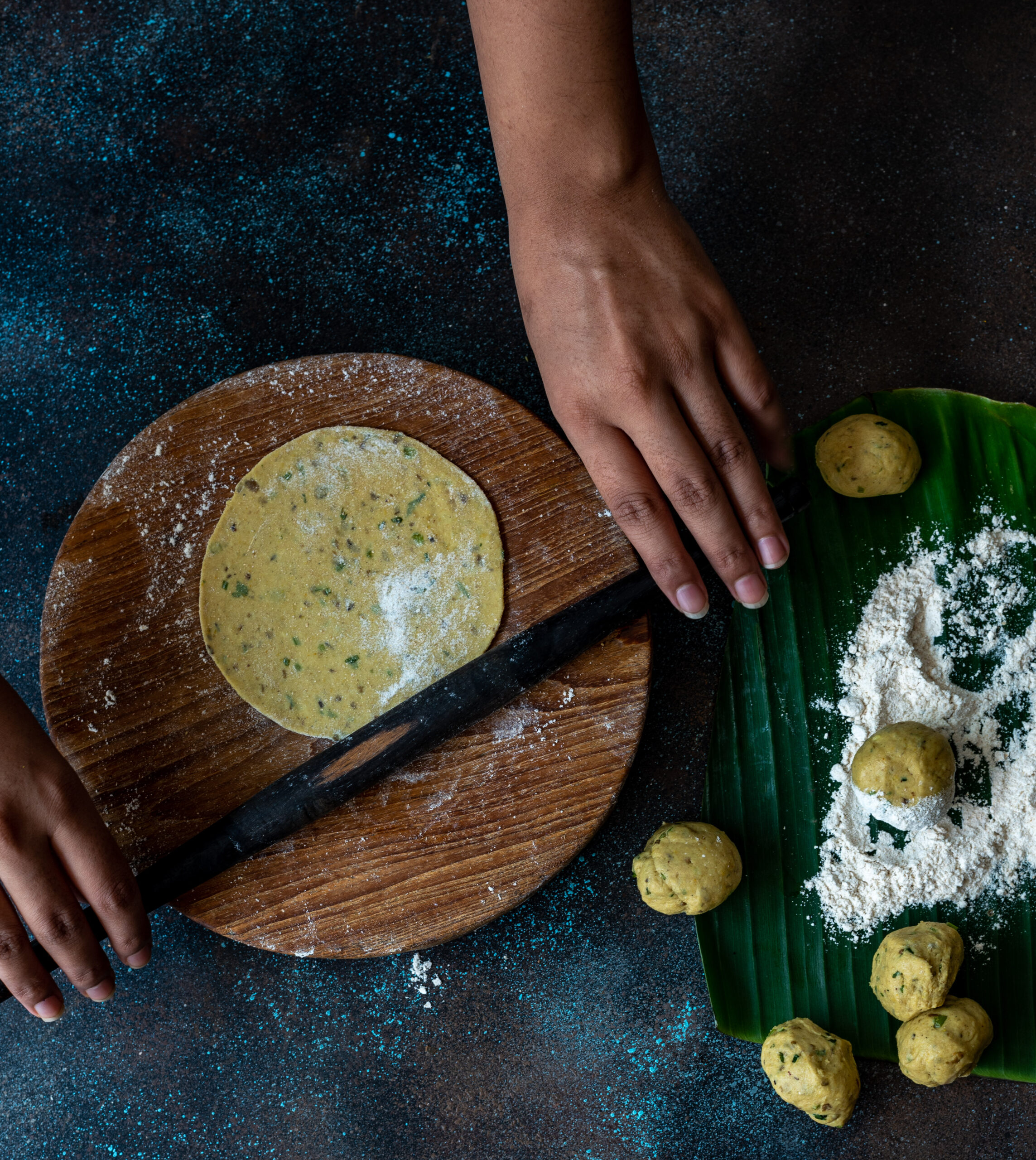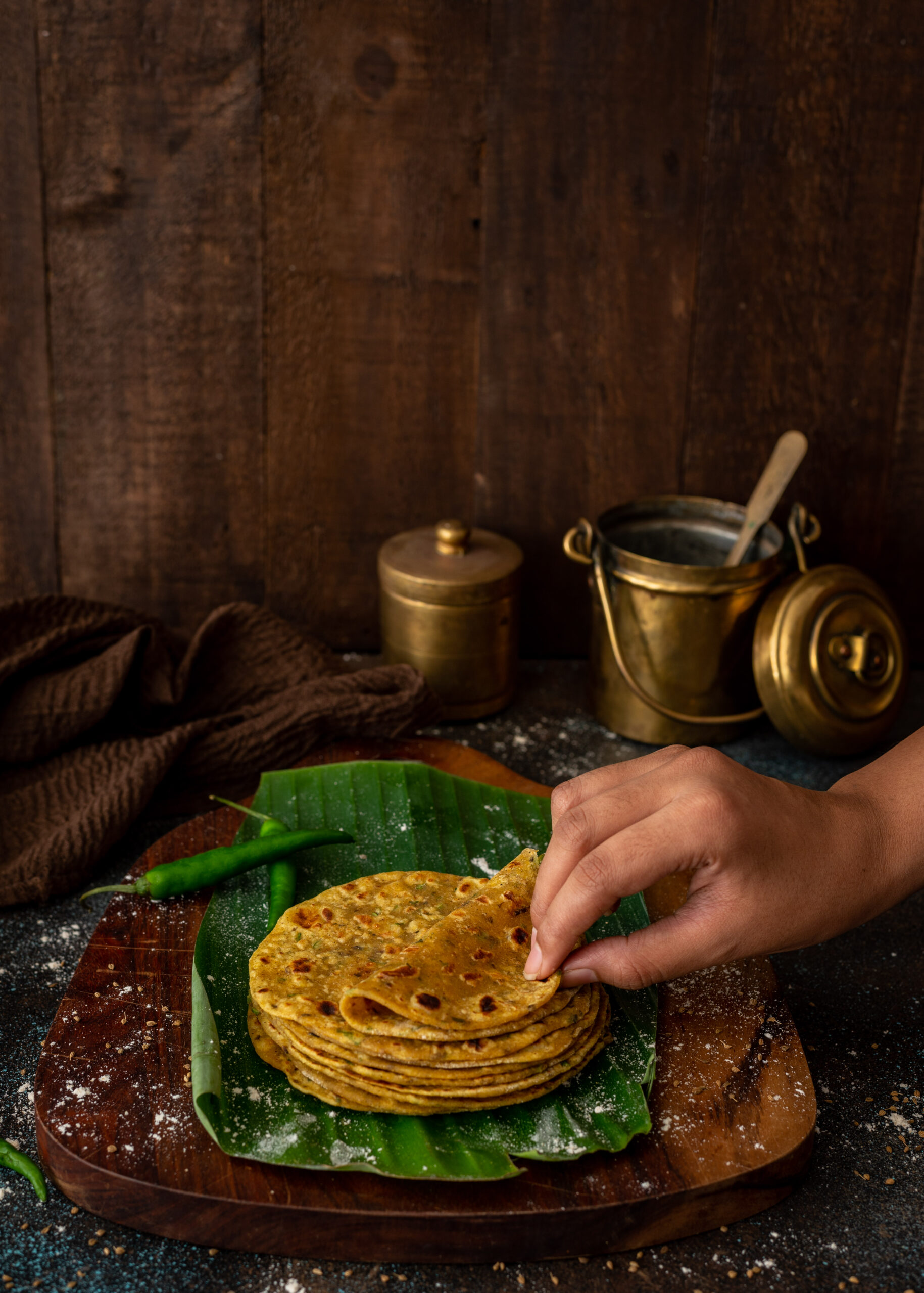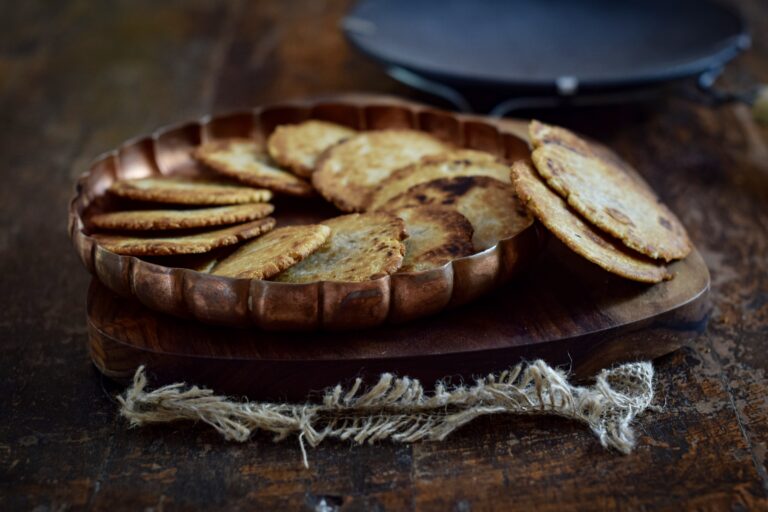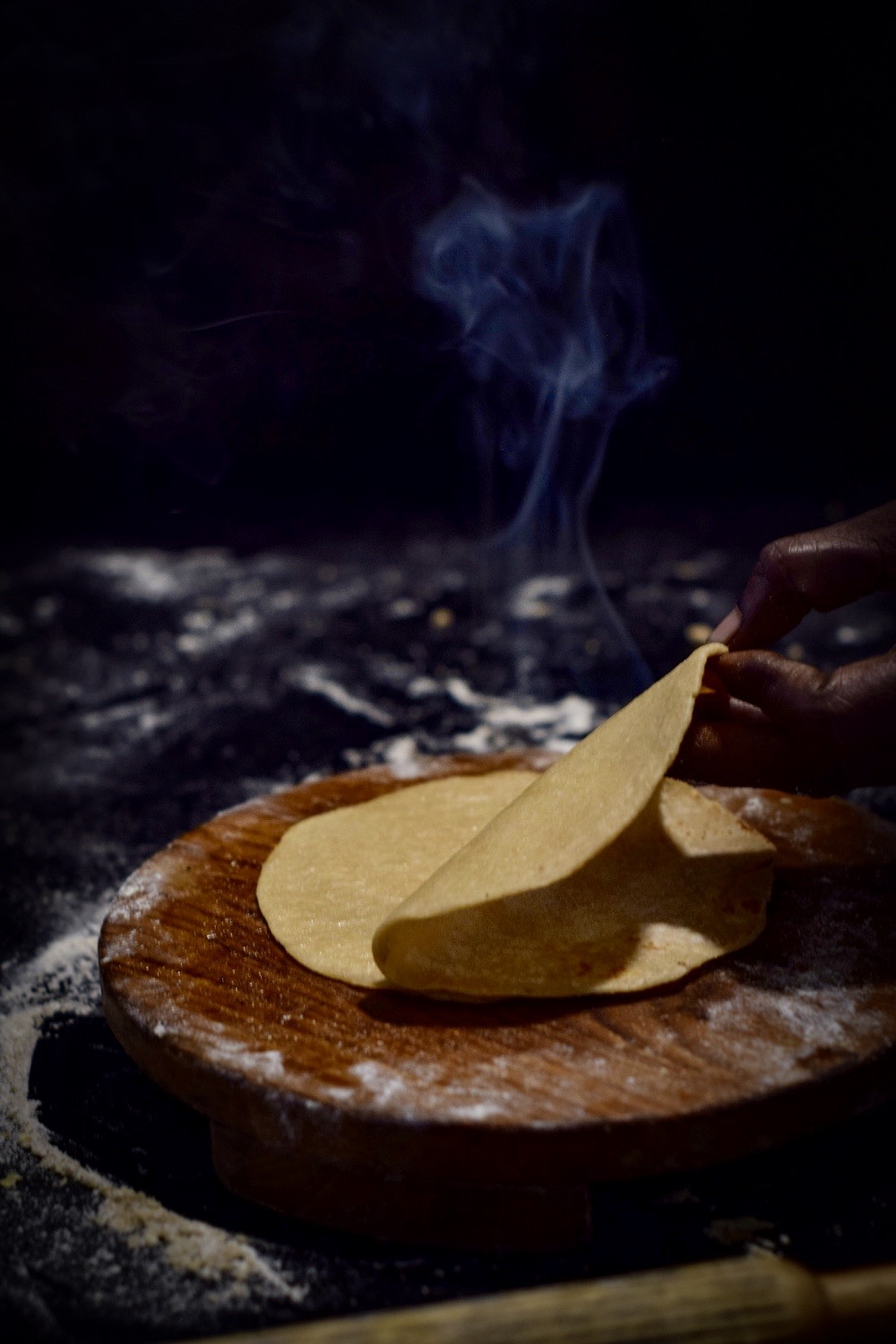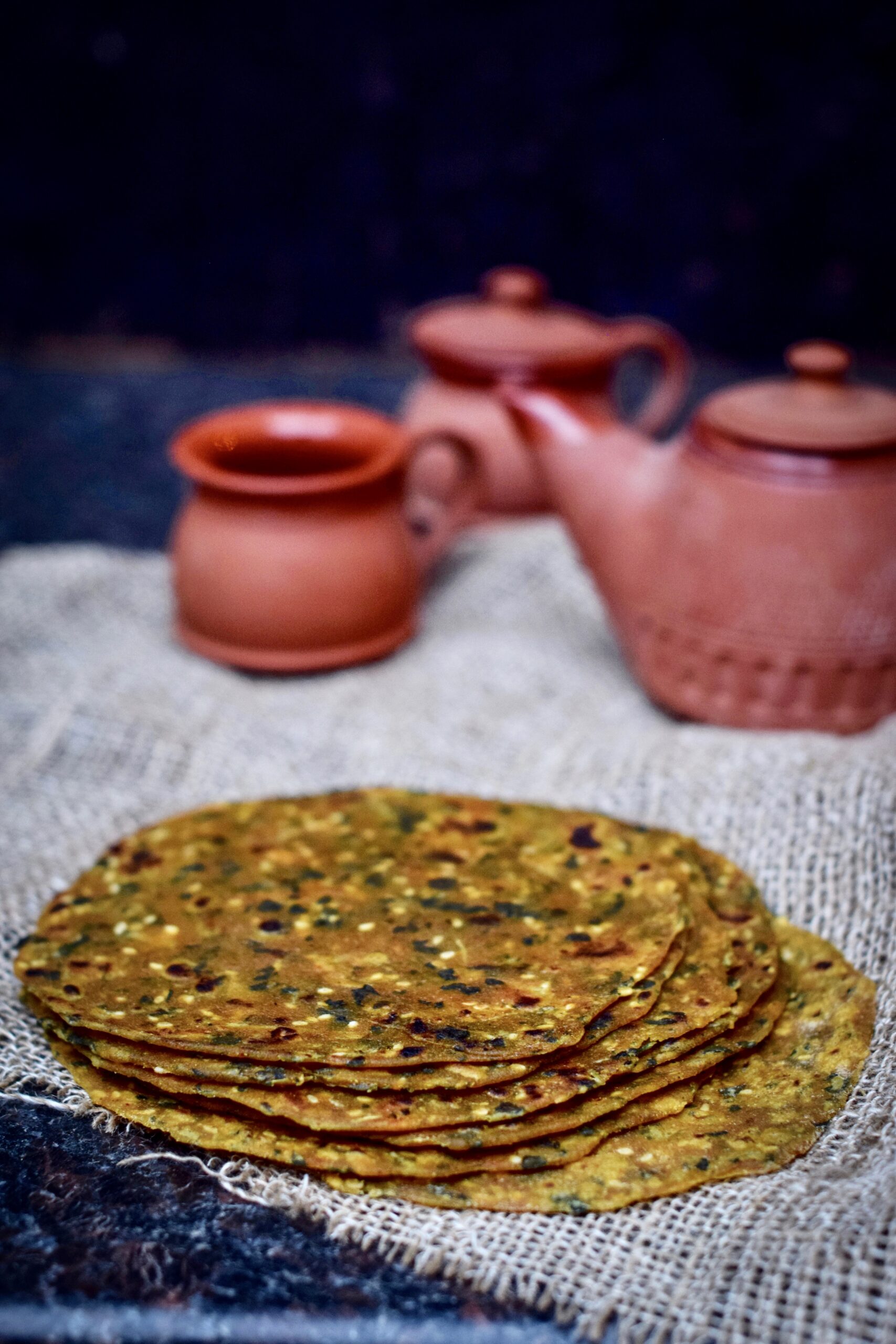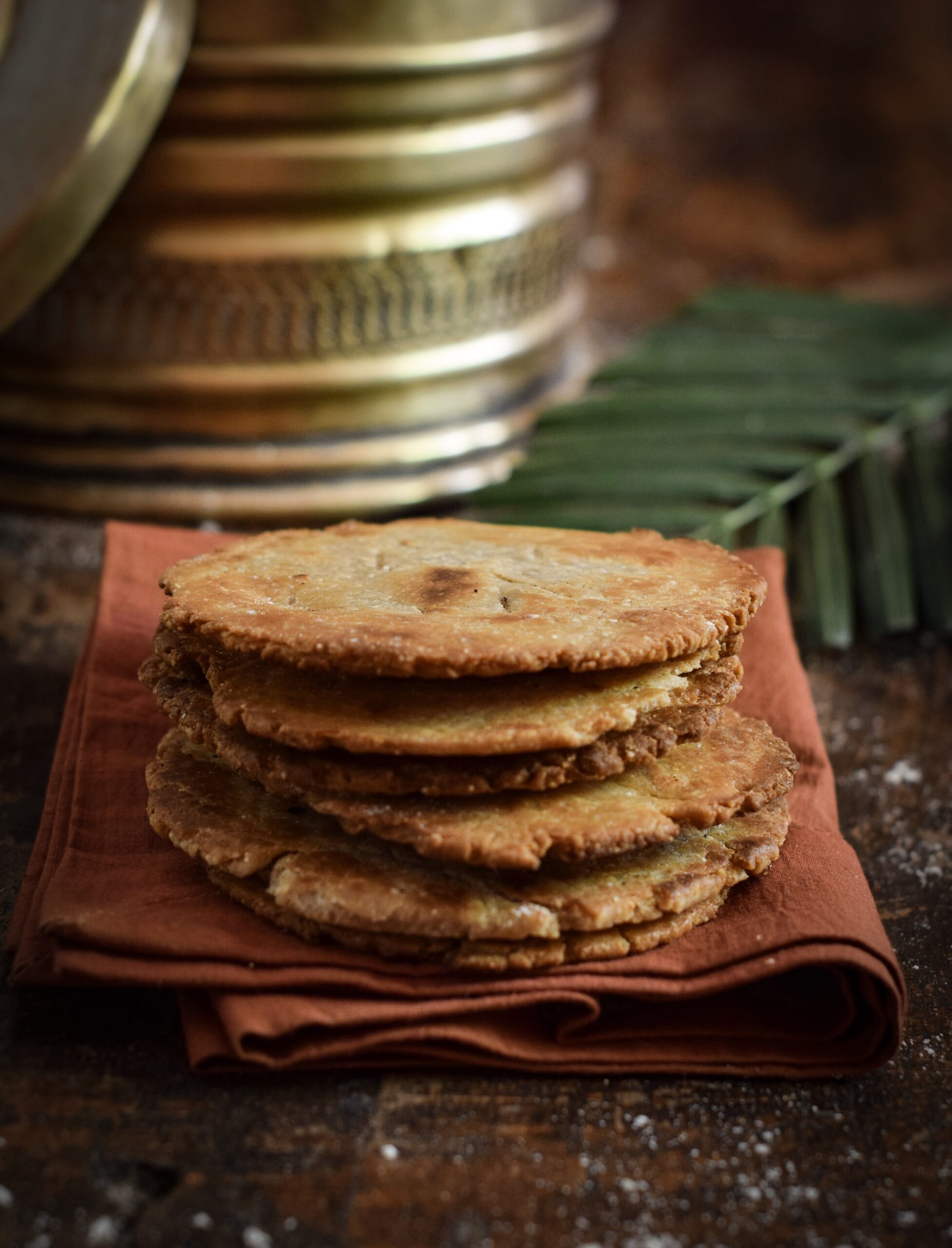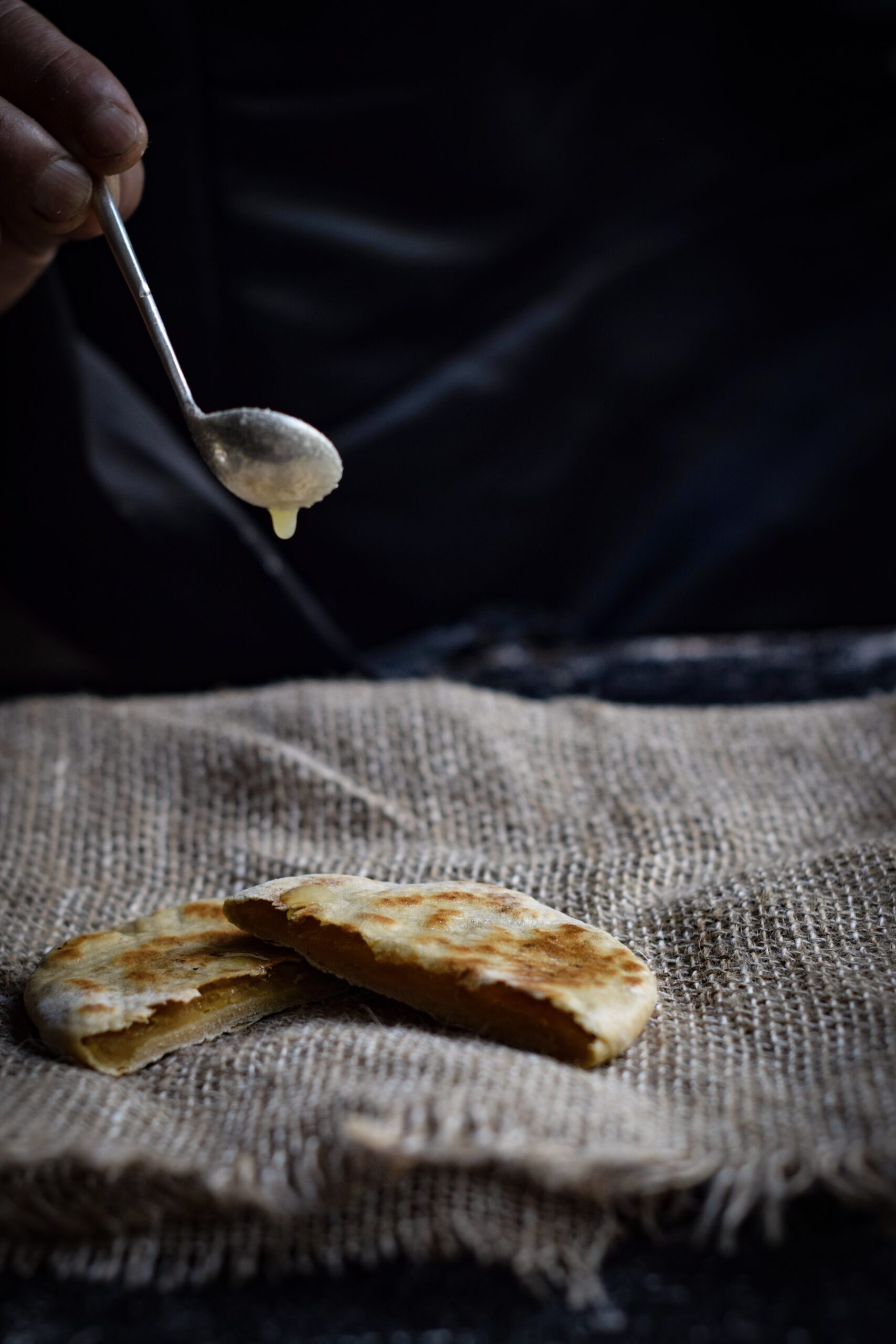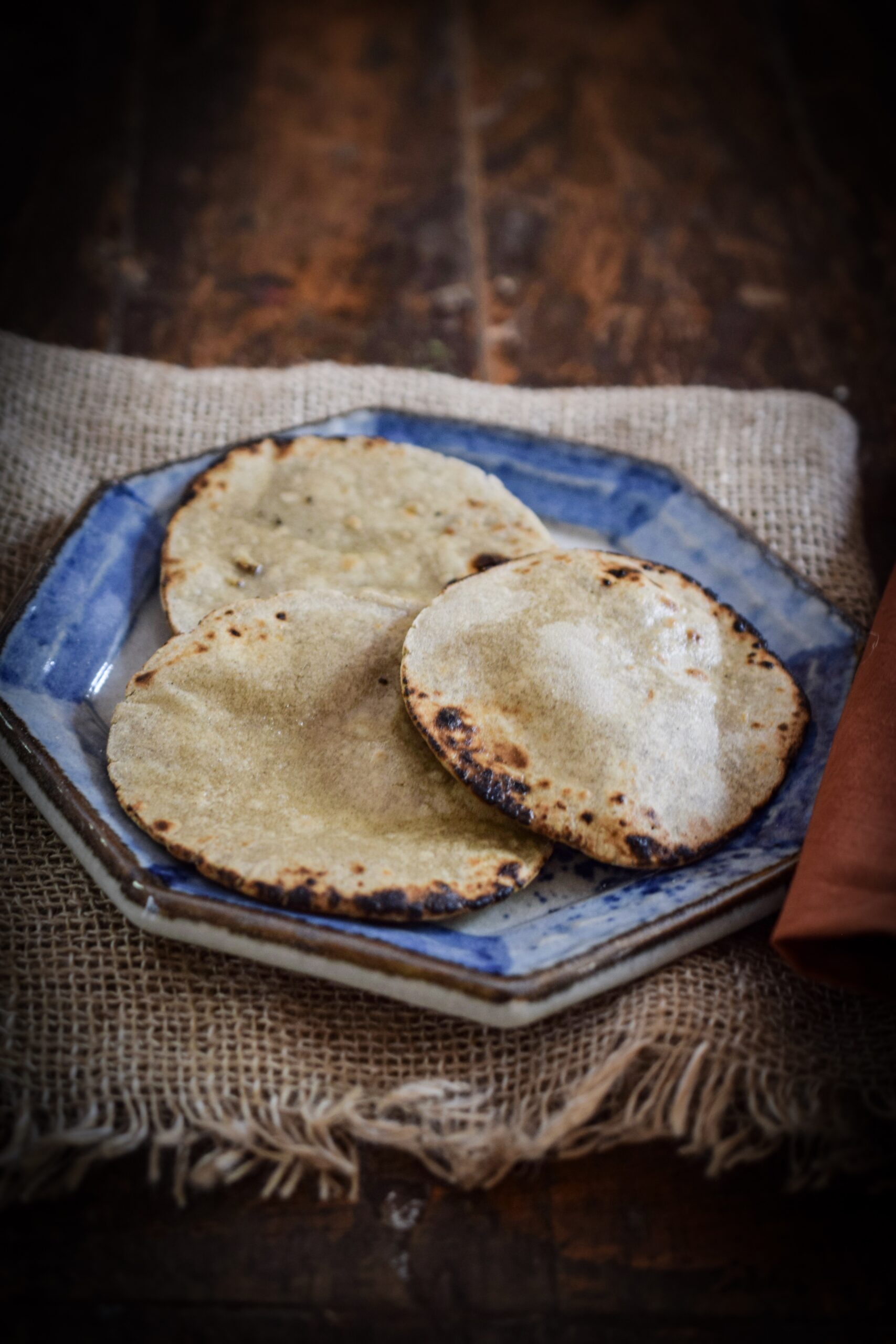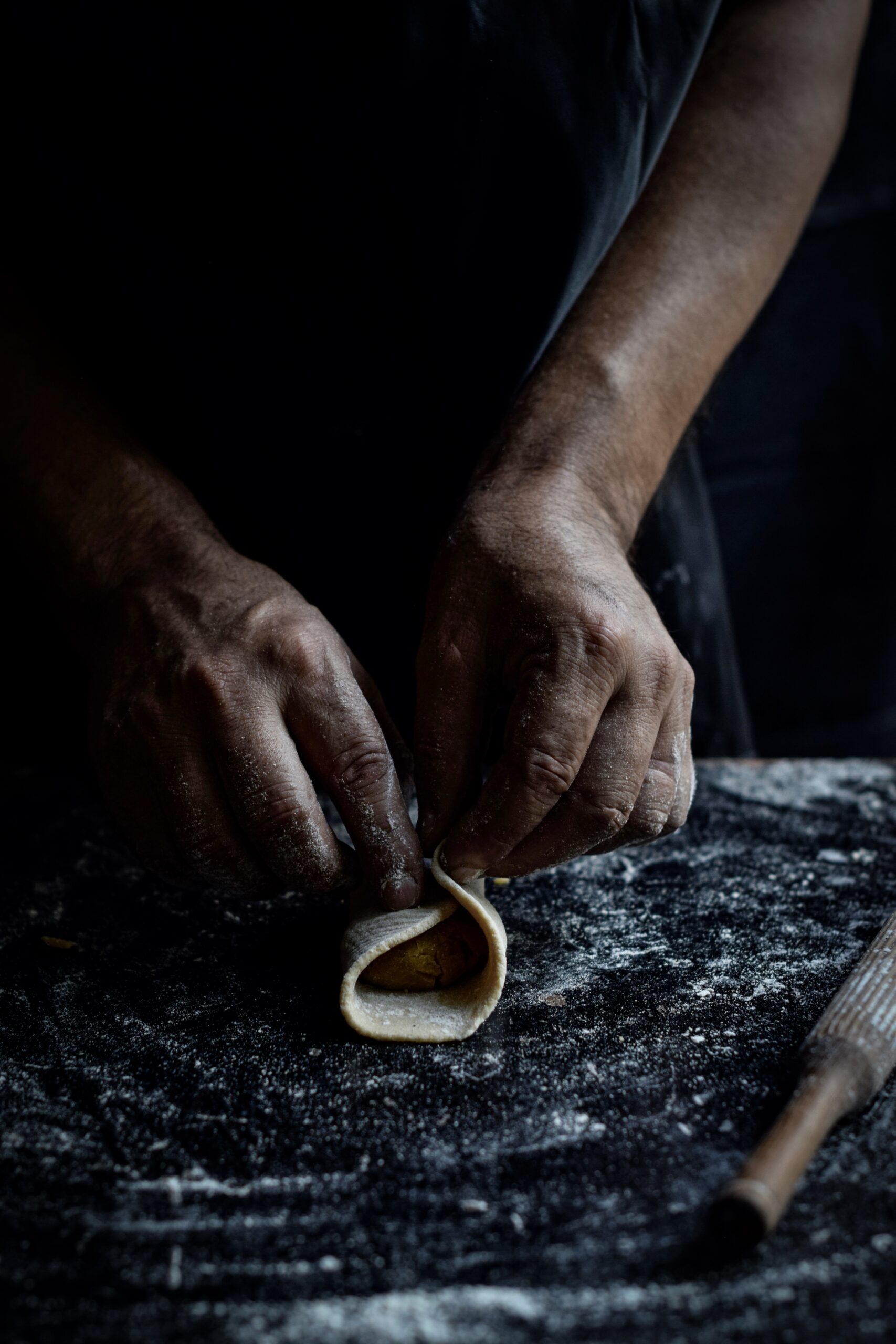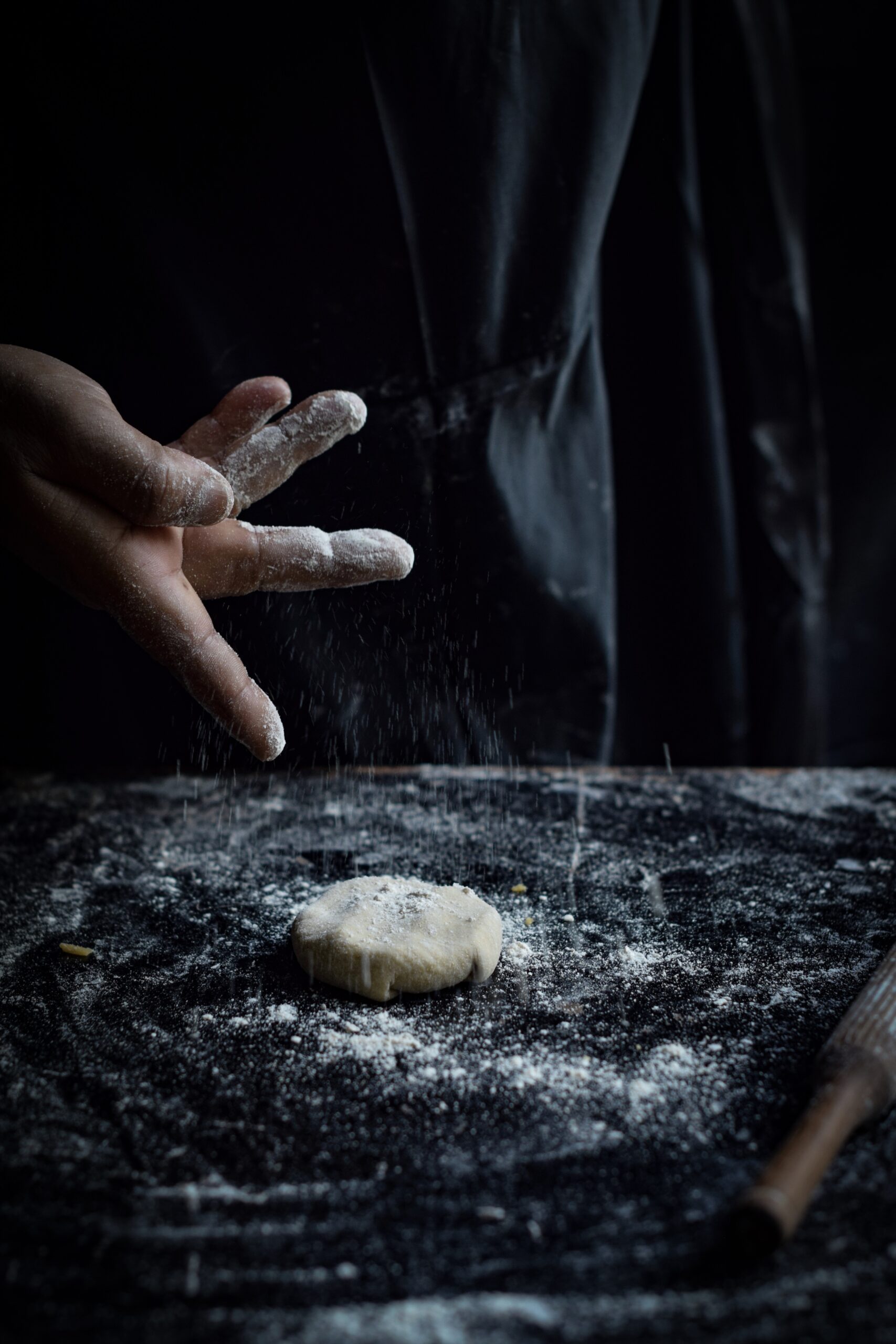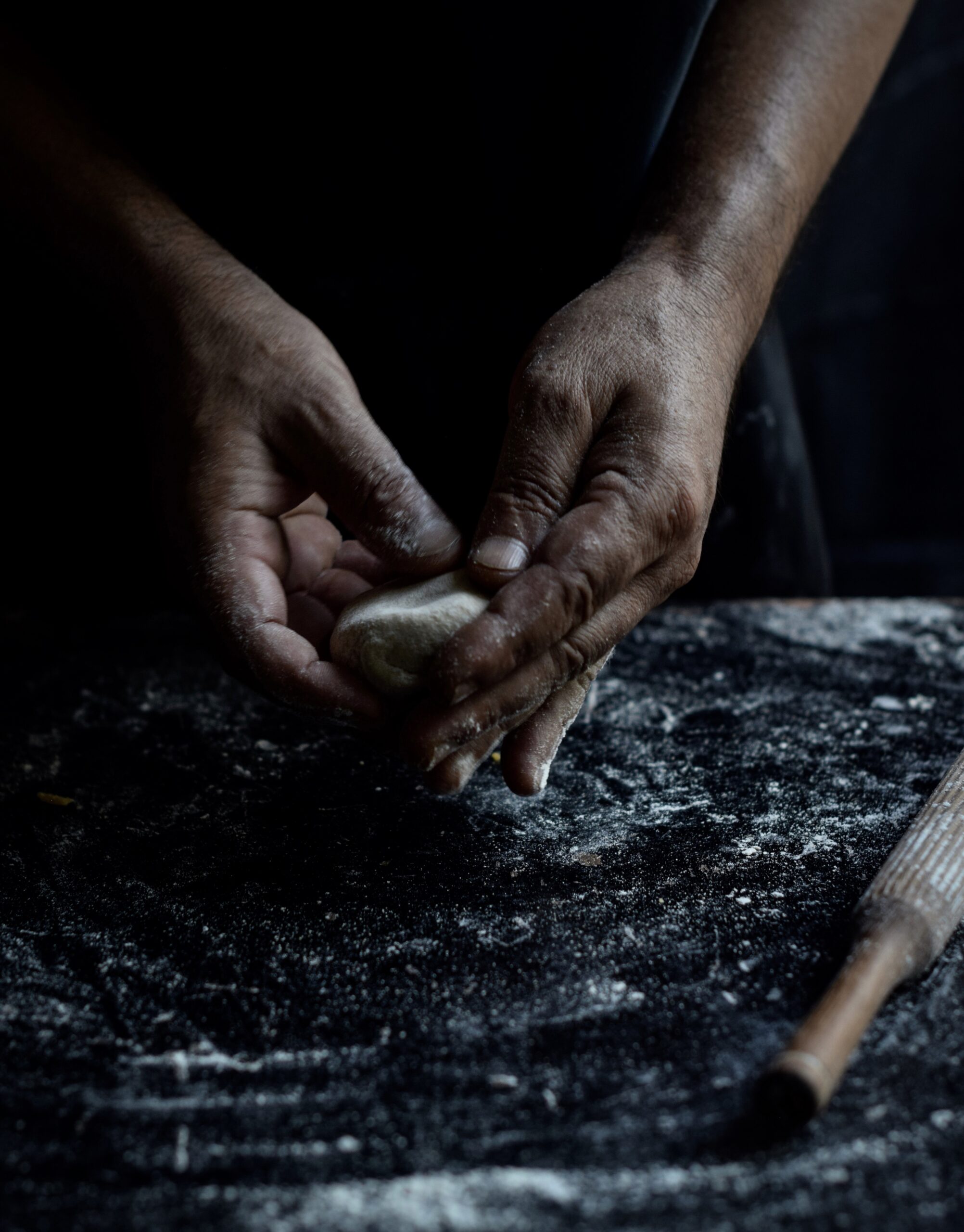What has become a challenge for me recently, cooking-wise, is figuring out how to pack nourishing and interesting lunches for the office-goers in my home. While I love having a hot Gujarati thaali ready for them, it isn’t always possible for them to come home mid-day. Sometimes, they have to travel a little far, as is common in India, or the day’s schedule is especially busy. It is always better to have home-cooked food in any case, and I prefer that they do so. This means that quite often lately, my mornings begin with a question: “Oh gosh, what shall I prepare for them today?” This is different from the regular daily musings over what to cook, because time is of the essence. The food has to be packed, and made to suit various likes and dislikes, before they leave. This paneer mint paratha is a recipe that came about to fulfil exactly this need.
I know that some of my readers may wonder why these lunchboxes aren’t prepared in advance, but that is because in India it is customary to cook fresh food each day. It is rarely carried forward, except for specific dishes, such as those in the Second Helpings series that I did long ago. Leftovers are consumed as soon as possible, and innovatively. Even so, fresh, hot, home-cooked food is just a preference and a way of life for most Indians. I think there are many reasons behind why this is the norm. One is that culturally, we don’t believe in wastage so we tend to cook in exact quantities. More often than not, even if we can afford to waste food, we prefer not to because the high levels of poverty here make an impression on us and make us conscientious. The idea is to cook only as much as is required, consume all of it, and then make more food for the next day.
Coming back to the paneer mint paratha: as I said, it is one among several recipes that I’m able to make fresh in the mornings and pack off with my loved ones for their workday lunches. My own workday therefore begins even earlier than theirs, but I’m fortunate to have household staff who help me cope with the demands of a very active kitchen that functions both for my family as well as for re:store. If you have a similar lifestyle, juggling other people’s schedules and preferences while also working either at home or beyond it, dishes like this will come very handy. The same is true if it’s your own lunchbox that you’re packing for.
A good lunchbox has to have a fair bit of thought behind it. The items in it should keep well and still maintain their taste and texture hours after packing, even if reheating is not possible. Items that may spill need to be very carefully packed. Something like this paratha, which doesn’t require a curry and is flavourful on its own, is a safer bet. That said, some curd or buttermilk on the side rounds out the meal, as does a pickle or chutney. These enhance the experience of eating on the go. I really believe that there should be something to look forward to during such lunch breaks, even if they are short and without frills. Filling the tummy is only one aspect of it. Even if eaten straight out of a lunchbox while pausing for just a few minutes, the meal should be appealing and rejuvenate the person who eats it so that they can carry on with the rest of their busy day.
I also came up with this particular paratha because I’ve been growing some herbs and basic vegetables in my garden, including tomatoes and – you guessed it – mint. These grow fast and are pretty easy to cultivate too. Little experiments like this are a lifelong fascination for me. As a child, I would sprinkle mustard seeds on a steel plate and be fascinated by the little shoots that appeared when I would check on them a few mornings later. That always excited me and made me proud. Now, we call these microgreens and incorporate them into healthy diets. Growing various sprouts or certain herbs ourselves is not difficult at all, even if we don’t have the space to grow plants.
Mint works especially well in summers as it has a cooling effect, but I feel it’s great at any time. It pairs well with so many other ingredients, and always gives a very refreshing touch to a dish. The paneer here can be replaced with peas, for instance. Or you can keep the paneer – that is, retain the protein boost – and include peas too. This is a compact lunch, flavour-packed, healthy and very delicious. Whether you’re eating it on the go or in a more relaxed way at home, you and your family are sure to enjoy it too.
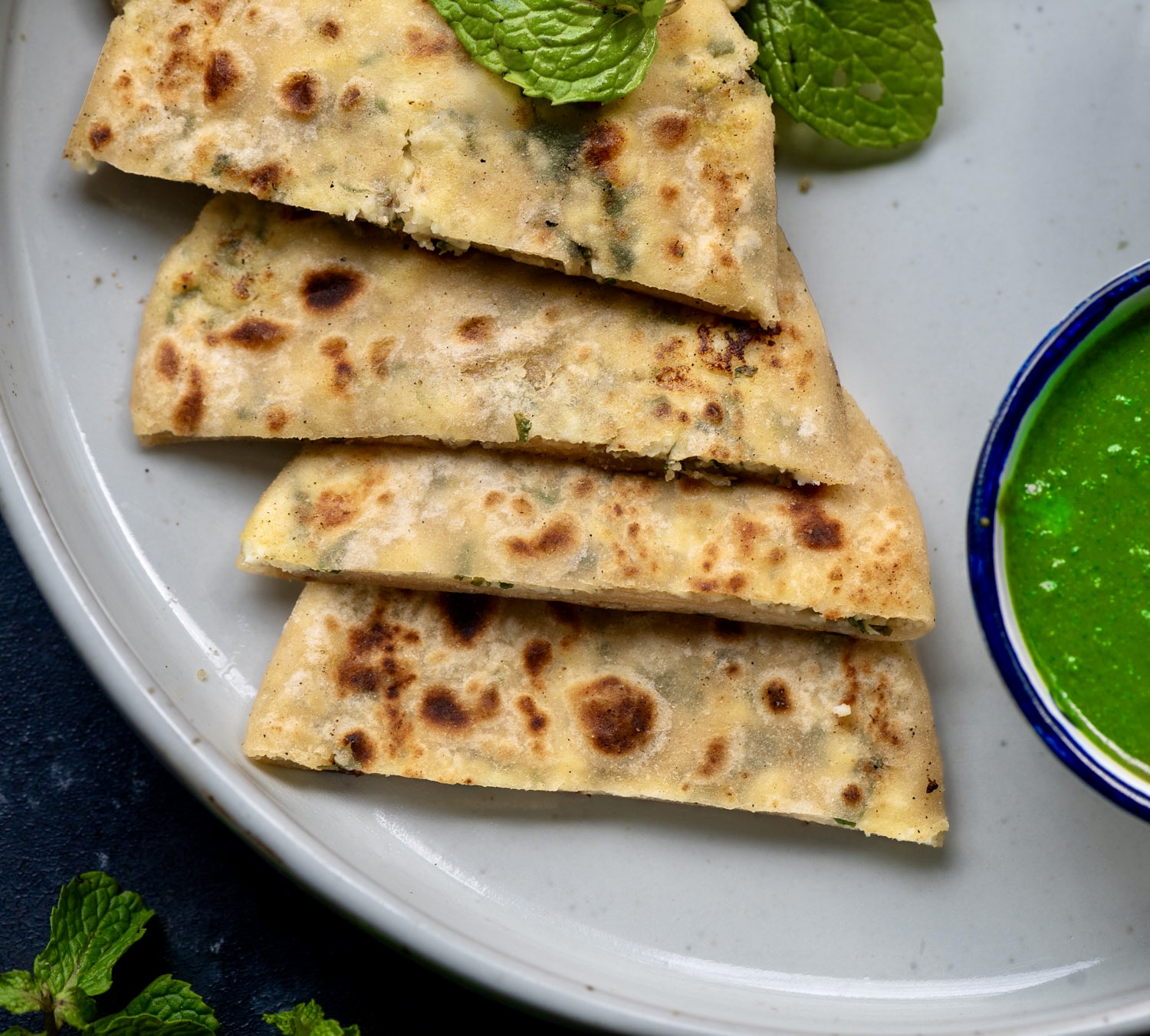
Paneer & Mint Paratha
(Yield: 5 parathas)
Paratha
1 cup whole wheat flour
½ cup maida
¼ teaspoon salt
2 teaspoons oil
¾ cup water
Filling
1 cup paneer
2 tablespoons mint leaves (finely chopped)
1 tablespoons coriander leaves (finely chopped)
¼ teaspoon aamchur powder
¼ teaspoon chaat masala
½ teaspoon green chili-ginger paste
Salt to taste
Ghee for frying
First, prepare the dough for the paratha. In a bowl, add the flours and the salt. To this, add water. Make a tight and smooth dough. Set aside for at least 30 minutes.
Prepare the filling by adding all the ingredients to a bowl. Mix gently. Set aside.
Now, roll out the dough into 5 balls. You may find that you have some extra, which you can use for plain parathas.
Using the help of some flour, dust 1 ball and roll it out into a disc. Repeat with all five. Place a spoonful of the filling in the centre of each disc and seal the edges by folding the corners of the dough. Gently roll out the filled discs into small parathas.
Heat a griddle on a medium flame, and place a rolled-out paratha on it. Allow to cook on both sides with the help of some ghee. Roast both sides well until golden. Repeat with the remaining parathas.
Your paneer mint parathas are now ready. You may want to serve them hot with pickle or chutney of your choice, or else pack them into a lunchbox that you or a loved one can look forward to, a little later in the day! If you’re a fan of Indian breads, don’t miss my post on different rotis. There are also a range of paneer dishes to explore on the blog.

